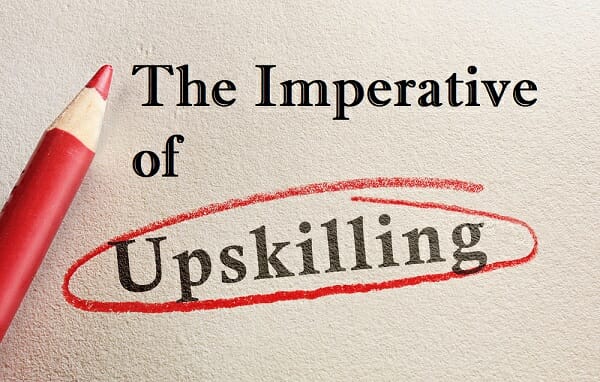The Imperative of Upskilling – Why Businesses Must Invest In Employee Development

LINKS TO CONTENT
ToggleIn an era where technology is advancing at breakneck speed, the need for businesses to upskill their employees has never been more critical. Upskilling, the process of teaching current employees new skills, is no longer a luxury but a necessity for businesses wanting to stay competitive in the global market. Here we set out the imperative of upskilling now and in the future.
There are compelling reasons why businesses should invest in upskilling their workforce.
Dr Getinet Haile, Assistant Professor of Industrial Economics at Nottingham University Business School contends there is increasing pressure on British companies to upskill their workforces, primarily due to the talent exodus following Brexit and the rapid technological advancements. Her research paper, about worker upskilling in Britain, posed two main questions. Does upskilling make a difference? If so, how can it be best achieved?
Her study uses data from the Workplace Employment Relations Survey (WERS) and the government-backed Investors in People (IiP) scheme to explore the relationship between upskilling and business performance. The main findings of the study suggest that upskilling does indeed make a difference. Companies that choose not to adopt a culture of continuous improvement are likely missing out on potential benefits and may be undermining their chances of survival in an increasingly competitive business landscape.
For businesses, these findings imply a need to acknowledge and respond to the mounting pressure to upskill their workforce. HR departments, in particular, need to take the initiative in this regard. The study also suggests that convincing employees of the personal benefits of upskilling is crucial to securing their buy-in.
Upskilling can also help businesses retain their best talent. According to a LinkedIn Learning report, 94% of employees would stay at a company longer if it invested in their career development.
Lastly, upskilling can help businesses save money in the long run. The cost of hiring new employees can be significantly higher than the cost of upskilling existing ones. A report by the Society for Human Resource Management found that the average cost to hire an employee is $4,700, while the average cost to upskill an employee is significantly less.
One of the most notable examples of a company that has successfully implemented an upskilling program is Amazon. In 2019, Amazon announced a $700 million investment in upskilling 100,000 of its employees in the US. The initiative, known as “Upskilling 2025,” aims to help employees gain new skills to move into more advanced jobs within the company or find new careers outside of Amazon.
The benefits of upskilling employees extend beyond the business itself. Upskilling can help employees feel more engaged and satisfied in their work, leading to higher job satisfaction and lower turnover rates. Moreover, upskilling can help employees adapt to the changing demands of their jobs, making them more resilient in the face of technological change and market disruptions.
When it comes to upskilling, it’s not just about spending money but spending it wisely. Here are a few tips on how businesses can get the best value for their upskilling investment:
Upskilling employees is not just a smart business move, but an essential one. By investing in their employees’ development, businesses can increase productivity, retain top talent, and save money. Moreover, they can help their employees become more resilient and adaptable, ensuring their success in the face of rapid technological change. So, if you’re a business leader, it’s time to make upskilling a top priority. Your business – and your employees – will thank you for it.
